
Happy Birthday Ashaji
Asha Bhosle, one of two most prolific singers of Bollywood (the other being her elder sister, Lata Mangeshkar) turns 85 today.
Born as Asha Mangeshkar, on 8 September 1933, in Sangli State, in the Bombay Presidency of British India, she started her singing career at the age of 9, in 1943; especially to earn for her family (her father died a year earlier, in 1942, Lata Mangeshkar was 13). Though Lata started acting in stage plays at the age of 5, both sister’s, Lata and Asha took up singing professionally, after their father’s demise. At 16, Asha eloped with 31 year old Ganpatrao Bhosle. Her husband and in-laws mistreated her. One day, the ever suspecting Ganpatrao Bhosle, threw a very pregnant Asha Bhosle (pregnant with their third child) out their house, along with their two kids. The Bhosle’s divorced in 1960. Somewhere in the 1960’s, she met music composer, Rahul Dev Burman, six years her junior, with whom Asha Bhosle collaborated on a number of songs. The two first worked together on Teesri Manzil (1966). A decade and half later, Asha Bhosle married Mr. Burman, in 1980. They later amicably separated due to financial difficulties. Yet they worked together until his death in 1994. In the mid-90’s, Asha Bhosle joined the the latest trend at the time, of remixing songs. She experimented with remixing old tunes of the 60’s & 70’s, that she had worked on with her second husband, the love of her life, R. D. Burman (whom she adoringly called “Panchamda”). Her two albums, dedicated to Burman, titled, Rahul and I (Volume 1 & 2), were hugely popular in the 90’s; despite criticism by many, against Bhosle, for tampering with good old melodies. Well into her 60’s by then, she joined the indipop scene of the 90’s, and went along with the India’s MTV and Channel V craze of the times. On 8th October 2012, a month after Bhosle celebrated her 79th Birthday, tragedy struck. Her unhappily divorced daughter, Varsha Bhosle, a singer and journalist, committed suicide.
Today, the very versatile Bhosle; who has over 12,000 songs to her credit (including 20 odd songs in, non-Hindi, Indian languages and various other foreign languages), recipient of the Dadasaheb Phalke Award and the Padma Vibhushanand, and who has been named the most recorded artist in music history, by the Guinness Book of World Records (in 2011), still leads a very active life in Mumbai, India. AND she is showing no signs of backing down, and is in no hurry to retire. In 2016, she released her most recent album, titled 82 (named after her age at the time).
I’ve grown up watching Bollywood movies, and from her 75 year career, here are my Top-25 favourite Asha Bhosle songs, she sang for Hindi Feature Films, only (she has sung, as a playback singer, for non-Hindi language films, as well as, for non-film songs in various languages, including in English).
oooooooooooooooooooooooooooooooooooo
TOP 25
oooooooooooooooooooooooooooooooooooo
1. “Dum Maro Dum” from Haré Rama Haré Krishna (1971)
This drug infused number, from one of my favourite Bollywood movies, became a Hippie Anthem in the 70’s. Miss Asia Pacific winner, from 1970, Zeenat Aman (a new comer in the world of the cinematic arts at the time, and not really known for her acting chops), was close to brilliant as a Hippie woman (whom Bhosle, lends her vocals to for this song), in this movie. Aman won a a Filmfare Award for ‘Best Supporting Actress’ and a BFJA Award for ‘Best Actress’. Soon she would be the ‘it’ girl, the Bollywood sex-symbol, of 1970’s decade. Unfortunately her sex-symbol avatar would overshadow her talent, and she was used by directors more as a bikini bombshell, than an actress. But she does have some good character roles to her credit, yet isn’t really known for her acting prowess. Director and co-star, Dev Anand (who plays Aman’s estranged brother, estranged due to their parents divorce, in the film), didn’t use the song in it’s entirety, in the movie; as he felt the hip number would overshadow his movie.
None the less, Asha Bhosle’s future husband, composer R. D. Burman’s, “Dum Maro Dum”, was a big hit, and a Hippie favourite. Bhosle went onto win a Filmfare Award for ‘Best Female Playback Singer’; and the song reached a cult status in India and abroad.
This film happens to have one of the best depictions of a Hippie Commune, on celluloid. Haré Rama Haré Krishna (1971) itself, revolves around a group of Hippies, set within few days, in Kathmandu, Nepal. Although Hippiedom was a counterculture youth movement born in the 1960’s, in USA, it spread around the world (the late 60’s was a time when globalization truly took place). With Hippie’s interest in Hinduism and Buddhism, many made their way into India (especially North India) and Nepal. Soon many modern youth from cities like New Delhi and Bombay, embraced Hippiedom with their open-minded, all inclusive, attitudes, and rebelled against tradition Indian notions. The Hippie sub-culture, was very prominent throughout the 70’s decade (and to some extent in the early 80’s), in Northern India and Nepal. Which in turn influenced Bollywood films of the time. Another reason American influenced Hippie lifestyles gained popularity as a subculture, amongst the literary elitist Indian youth (up north), was thanks to the British band, The Beatles, going and living in India, at the ashram of Maharishi Mahesh Yogi, in Rishikesh, in 1968. Other western celebrities followed suit, and young, well educated, Indians from prominent families, were not far behind. Of course, most Hippies were too drugged to remember how cool they were. But, none the less, Hippie influence played a major role in modernizing India, back in those decades.
2. “Chura Liya” from Yaadon Ki Baaraat (1973)
A pair of glasses clink, then she strums a few chords in a guitar. And some of the most melodious lyrics come to life.
From playing a Hippie girl, in the previous movie, we see her transform into a sophisticated young lady, for this movie.
Picturized yet again on Zeenat Aman, this is a mesmerizing melodic tune. Romantic, dreamy, with the guitar strumming a lovely tune and words to die for, this song pulls at your heart strings. Although, it’s not a completely original composition. The opening lines of “Chura Liya” were copied from the 60’s song, “If It’s Tuesday, This Must Be Belgium”, sung by Dutch singer, Bojoura. None the less, this Hindi song is pure seduction, hypnotically transporting us into dreamy romanticism. Composer, R. D. Burman, used actual cups and saucers to create the tinkling sound of the song.
Zeenat Aman, looks amazingly chic and elite, in that fashionably simple white culottes, adorned with a choker neck, broach and earrings. This elegant white outfit is my favourite from any Bollywood movie ever. Simple and sophisticated, it compliments and contrasts beautifully, with her light cappuccino skin tone. Naturalistic sense of style, a look that is very 70’s!!!!!
3. “In Ankhon Ki Masti Ke” from Umrao Jaan (1981)
Bejeweled from head to toe, a courtesan, from mid-19th century Lukhnow, sings “In Ankhon Ki Masti Ke”. The movie was Umrao Jaan (1981), based on the 1905 Urdu novel, Umrao Jaan Ada by Mirza Hadi Ruswa. Based on a true story, the real life courtesan, Umrao Jaan, had shared details of her life story, with the author, Mirza Hadi Ruswa.This historical bio-pic is made with such perfection, from the set designs to the costumes, and make-up (down to the Mehendi on her hands and feet), made to resemble the period it was set in. The mid-19th century was a very chaotic time in Indian history, under the British Raj, which gave rise to the Indian Rebellion of 1857.
The classical poetic rendition by Asha Bhosle, is a melancholic ghazal, performed by actress, Rekha! Rekha (later nicknamed as Madame Ré), happens to be one of my favourite Bollywood actresses ever. A very versatile actress, she made her mark in both, commercial Bollywood films, as well as Indian Art House Cinema (Parallel Cinema) made in Hindi and English (i.e. Indian English Language movies). Rekha won the National Film Award for Best Actress, for Umrao Jaan. She was honoured with the Padma Shri by the Government of India, in 2010.
4. “Do Lafzon Ki Hai, Dil Ki Kahaani” from The Great Gambler (1979)
With the breathtaking backdrop of Venice, this song sung in a gondola, is one of the most beautifully lyrical love songs ever. Picturized around, Bollywood’s Badshah, the Big B himself, Amitabh Bachchan (my favourite Bollywood actor, since childhood); accompanied by Zeenat Aman (lip syncing to Bhosle). It’s basically Aman’s character translating the gondolier’s love song, into Hindi, telling a story of love and woe, to her lover (played by the Big B).
Amitabh Bachchan, voted the “Star of the Millennium”, happens to be the most influential actor in the history of Indian cinema, nationally and globally. Bachchan, was appointed as an International UNICEF Ambassador in 2005, and was awarded the Padma Shri (1984), the Padma Bhushan (2001) and the Padma Vibhushan (2015) for his contributions to the arts. The Government of France honoured him with its highest civilian honour, Knight of the Legion of Honour, in 2007. He made his Hollywood debut, at the age of 70, in Baz Luhrmann’s The Great Gatsby (2013).
5. “Yeh Ladka Hai Allah” from Hum Kisise Kum Naheen (1977)
Kajal Kiran, looking trés chic, in a fuchsia pink short kurta and bell-bottoms (a very 70’s, casual chic, fad), runs around singing, how difficult it to make any sense to this uptight man. Hilarious and clever, the entire song is a dialogue, that neither interprets, what the other is trying to say. Especially towards the end, the girl has no actual idea, what he’s talking about, through his lyrics.
6. “Duniya Mein, Logon Ko” from Apna Desh (1972)
Sung alongside her husband, composer, R. D. Burman (who lends his voice to Rajesh Khanna), this was a hit, mainly thanks to unusual gruffy gurgling vocal sounds made by Burman. That distinct sound and rhythm, became a R. D. Burman trademark. Bhosle wasn’t far behind (singing for Mumtaz), matching vocals perfectly in step, to Burman. Again worth to note the stylish attire. Rajesh Khanna looking slick as ever, in those gold-rimmed octagon shades with green lenses (somewhat resembling John Lennon’s rose tinted round sunglasses, and Khanna looks like a ‘Beatle’ himself, to some extent, here), and that red velvet n’ white designer suit. Mesmerizing Mumtaz, with her natural peaches n’ cream skin, and a blonde wig, looks like a Scandinavian beauty. The eclectic music and dancing is well in sync, and the flawless beauty, Mumtaz, with her deep plunging neckline, double slit, maxi dress, glides barefoot on the smooth terrazzo floor with such ease. In the movie, the duo are in the guise of foreign (Caucasian) investors, to expose corruption at the hands of a conniving trio.
R. D. Burman revolutionized Indian music forever, with this song.
7. “Raat Ke Hamsafar” from An Evening in Paris (1967)
Shammi Kapoor and Sharmila Tagore roam around the streets of Paris, to this romantic tune, colour coordinated in navy blue. From the 70’s, now we go back to the 60’s. The era of bouffant hairdo’s, mini-skirts and shift dresses. Here we see Tagore in a tightly draped saree, with a small, tie-knot on the back, blouse. Sharmila Tagore was the first Bollywood actress to appear in a bikini, on a magazine cover, in 1966 (see my Blog-post Classic Movie History Project Blogathon – 1966: The Year dubbed as Nineteen Sexty Sex from June 2015). She wasn’t the first to dare to wear a bikini, but no Indian actress had appeared in the skimpy two-piece on a cover of glossy publication before. Tagore was another versatile actress, who transcended genres, appearing in Bollywood commercial films, as well as Art Films, made in Bengali, Hindi and English (again, Indian English Language movies). She led the Indian Censor Board, between 2004 and 2011, became the National UNICEF Goodwill Ambassador for in India in 2005, and she was one of the “International Competition’s” Jury Members at the 2009 Cannes Film Festival.
8. “Sapna Mera Toot Gaya” from Khel Khel Mein (1975)
Aruna Irani laments in chains, on the loss of her lover. In flashback sequences we see, her lover was Rakesh Roshan. Beautiful, heart rending, stage performance on the tragedy of falling in love and surviving after tragically losing one’s lover.
9. “Kya Dekhte Ho” from Qurbani (1980)
70’s sex symbol, Zeenat Aman, shows her assets, in a heavily cleavaged top, in this song, alongside director and co-star, Feroz Khan. Interestingly in the song, she asks, what he is looking at and what he wants? Of course he replies he is looking at her face and desires her affection, as she flaunts her gorgeous feminine body and unabashedly her soft female sexuality. This ever-green song bagged Qurbani (1980) a special award. Qurbani, was a Bollywood remake of the, English Language, Italian film, Un Uomo da Rispettare (1972), a.k.a. The Master Touch, directed by Michele Lupo.
10. Namak Halaal (1982)
This movie stars three out of five of my favourite Bollywood superstars of the 70’s & 80’s (See my list Bollywood FIVE from July 2018 on IMDB); Amitabh Bachchan, Shashi Kapoor and Parveen Babi. Parveen Babi sizzels in a one-piece gold attire, with gold stilettos. Glittering away, she looks sexy and sophisticated, without looking cheap and gaudy. Parveen Babi, is known for her trade-mark hair-do, straight long hair, with the famous parted Parveen Babi bangs. But here, she sports a loose perm, and the style looks very early 80’s, and very up to date. Yet, she makes that look her own as well. Her simple n’ stylish dance steps, in high heels (except for one long shot, panning around the room, Babi does barefoot), works well with Bhosle’s vocals. The glamorously expensive set design gels well with this night club number.
The late Shashi Kapoor, hailing from the Kapoor clan (Bollywood’s Royal family) was India’s International star. Not only did he act in, direct and produce, movies in Bollywood and non-Bollywood (including Art Films and Indian English Language films), Kapoor also appeared in British Films of great repute. He is also known as Merchant Ivory Productions’ very first hero. He was honoured with the Padma Bhushan (2011) and Dadasaheb Phalke Award (2014). Sadly, both Shashi Kapoor (the most beautiful man of Hindi Cinema, inside out, both looks and personality wise) and Parveen Babi, are no more. Both suffered from depression, in their lives. Kapoor, due to the loss of the love of his life, actress, Jennifer Kendal, to cancer in 1984 (he never fully recovered from it); and Babi, due to sad life experiences, failed relationships, loneliness and paranoid schizophrenia. She became a recluse later in life, and distrusted everyone. She died all alone, due to organ failure and diabetes, and nobody was aware of her death, till her body was discovered, three days later.
Both Shashi Kapoor and Parveen Babi, were well literate, and two highly intellectual minds, of the Indian film industry. Babi was a graduate of English Literature. Earlier this year, Hollywood paid tribute to actor Shashi Kapoor (along with actress Sridevi), when they honoured Kapoor and Sridevi, in the “In Memoriam” segment, at the 90th Annual Academy Awards 👠 held in March 2018.
oooooooooooooooooooooooooooooooooooo
11. “O Saathi Chal” from Seeta Aur Geeta (1972)
Bollywood’s Dream Girl, Hema Malini (another of my favourite Bollywood actresses, growing up), skirts through obstacles as she sings skating with Sanjeev Kumar. In real life, Sanjeev Kumar was madly in love with Hema Malini, but she didn’t reciprocate. She was in love with Dharmendra (who also acts in this movie), whom she later married.
Hema Malini, along with Parveen Babi, held the Number.1 Bollywood position, in two decades, the 70’s & 80’s, a rarity for an actress in Bollywood. Hema Malini can be see in the picture atop, in a pink saree, walking behind Asha Bhosle. This song again, is a good insight into the casual fashion, of the times. Well tailored trouser suits, and Hema Malini, matches hers with a lilac blouse with long cuffs, stylish purple (tie-down) waistcoat and a purple scarf tied like a hairband, and earrings, while Kumar dons a (buttoned-up) jacket with a khadi collar/Nehru collar.
12. Medley of Several Songs from Hum Kisise Kum Naheen (1977)
This dance n’ song competition from Hum Kisise Kum Naheen (1977) is super enjoyable. We grew up watching this movie, a kazillion times. Bhosle lends her vocals towards the end, to the song “Mil Gaye, Hum Ko Saathi, Mil Gaye” lip synced by actress, Kajal Kiran, in red bell-bottoms, a red poncho over a halter-neck top, with red platform shoes. Seriously!!! The stylish fashions of the 70’s! WOW!!!! The tailored trouser suits, wide belts, bandanas, floppy long hair, naturalistic minimalist make-up!! One of the main reasons I love the styles of the 70’s, most probably is because I grew up, in 80’s & early 90’s, watching Bollywood films from the 60’s, 70’s and early 80’s. The late 60’s & the 1970’s decade, were truly eras of cool. And their disco numbers were fun, stylish, avec a very modern outlook. And these songs are truly Timeless!!!!!
Added to which, the stylish set design, with the dual circular stage, just amazing. This compilation short-songs, is a really good insight into the sights, sounds and styles of a truly unique decade. Again, very 70’s!!!!!
13. “Yeh Mera Dil” from Don (1978)
As the sultry “Mata Hari” type character, played by Helen (of Anglo Indian & Burmese roots, in real life) seduces and Underworld Don, played by Amitabh Bachchan, to get him arrested by the cops, she sings and dances to this seductive club number. Don is responsible for the death of her fiancé. Of course, her plan backfires and is killed by the Don, instead.
14. “O Haseena Zulfanwaali” from Teesri Manzil (1966)
From watching Helen play a spy seductress, we go back a decade, and see Helen do a sexy cabaret, from the 60’s thriller, Teesri Manzil (1966). Helen happens to be the most popular Bollywood dancer, till date. She was known as Bollywood’s own “Nautch” girl, of the 1950’s, 60’s, 70’s & early 80’s. Yes, she reined the on-screen cabarets, for four decades. She looks great in the Spanish flamenco dress (she is seen in three different attires, including a reddish-pink flamenco dress). The late Shammi Kapoor, too, looks dashing in that platinum toned blazer with salmon pink lapels.
Teesri Manzil was the first collaboration of Bhosle and Burman.
15. “Zuby Zuby Jalembu” from An Evening in Paris (1967)
From one 60’s Bollywood cabaret to another 60’s Bollywood cabaret. This time picturized with Sharmila Tagore. Donning what looks like a blend of a playboy bunny suit and a burlesque attire, a la ‘Moulin Rouge‘, Tagore foxily prances around to this rhythmic number. She does justice to the slutty character she essays, in this song.
16. “O Mere Sona Re Sona Re” from Teesri Manzil (1966)
A blend of the old and the new (at the time), a style that should be out-dated, has surprisingly stood the test time, and aged pretty well. Must have something to do with the fact, the remixed release by Bhosle, herself, in the 1990’s, brought about a new found appreciation for this number. Also check out the very 60’s, shift skirt style, skin-tight slawar-kameez, worn by Asha Parekh. In the 60’s, the slawar-kameez, became really tight, and instead of having two side slits, the tops had one slit in the back, to ape the tight skirts of west. Very 60’s, very Indian!!!!!
17. “Hum Ko To Yaara Teri Yaari” from Hum Kisise Kum Naheen (1977)
This use to be my favourite song from this movie, as a kid, but growing up, as I matured, and understood the lyrics and tunes, “Yeh Ladka Hai Allah”, with its deeper meaning (See no.5, atop) became, my favourite from Hum Kisise Kum Naheen (1977). None the less, this is a fun filled song, and again, the stylish bell-bottom trouser suits of the 70’s. So cool!! Especially the camel coloured leather suit worn by Rishi Kapoor. Kajal Kiran’s white bell-bottom attire with the red shawl, and white purse/handbag, too looks really hip.
This fashionable generation most probably didn’t expect to grow old. It’s truly hard to believe, such stylish modern Indians of the 70’s, are in their 70’s today (some would still be in their 60’s). These were stylish attire our parents, in their prime, wore, and for younger generations, grandparents. They were so much more cooler than people today. In fact, our dress sense seems pretty bland, in comparison.
18. “Raat Baaki Baat Baaki” from Namak Halaal (1982)
As Bhosle croons “Raat Baaki Baat Baaki”, picturized around Parveen Babi (alongside Shashi Kapoor and Amitabh Bachchan), we see Babi’s tensed character in a dilemma. She is hosting a party in a ship, and her mission is to help kill Kapoor’s character, or her mother shall meet her end. Might seem pretty clichéd, but women in history have found themselves being put in uncomfortable situations. Here we see Babi, in her trademark hairstyle, with the famous Babi bangs, and minimalist make-up, she was famous for, back in the 1970’s. She sure had think, luscious, long tresses. AND, she looks gorgeous in that figure hugging black dress, with a long slit at the back, adorned with simple long earrings and high heels. Very Classy!! There is a thing about wearing black badly, not everyone can carry it with grace and elegance. Babi sure could, and she looks bewitchingly beautiful in it.
19. “Aaja, Aaja, Main Hoon Pyaar Tera” from Teesri Manzil (1966)
Back to the “Third Floor”, i.e. Teesri Manzil (1966), this time with a night club scene of the 60’s. And yes, the twist was a craze in 60’s India as well. Asha Parekh (playback singer Bhosle, of course) looking mod, in tight black pants and a pink top, twists around with Shammi Kapoor, to this crazy beat.
20. “Sare Shahar Mein” from Alibaba Aur 40 Chor (1980)
Based on the, 18th century, Arabian Nights tale, Ali Baba and the Forty Thieves, this Indian-Soviet Russian co-production, has some memorable songs. More interesting for children than adults, it’s set designs and Arabian costumes are amazing, as well. This particular Arabian style song, is more memorable, for it’s a duet, Bhosle sings with her elder sister, Lata Mangeshkar. This song is picturized with Hema Malini (for whom Mangeshkar sings) and Zeenat Aman (sung by Bhosle), who are stuck among two groups of gangs. Hema Malini’s real-life husband, Dharmendra, playing reel-life husband, Ali Baba, makes an appearance at the end of the song, wondering what’s wrong with these two women.
21. “Reshmi Ujala Hai” from Sharmeelee (1971)
Picturized on, Marathi actress and dancer, Jayshree T. (who also worked in some Bollywood movies), we see her do a striptease at an elite club. We also see, the lead actress of the movie, Rakhee, in a dual role; one watches the show from above, as the other enters the club later, with her husband (played by Shashi Kapoor). Lyrically seductive, Jayshree T. dances (and strips) holding a pair of, aesthetically placed, still rings. She’s also joined in by a muscular male stripper, later.
22. “Parde Mein Rahne Do” from Shikar (1968)
Another Arabian dance, and another Dharmendra – who walks in the middle of song, still looking quite confused (see no.20, above); or rather surprised in this case. This time though, the film has a contemporary setting, and the Arabian style number, is actually a stage show. The lead actress of this murder mystery, Asha Parekh, performes as an Arabian princess, who pleads people not to lift her Pardah (or Purdah), and expose her identity. Another beautiful song, by Asha Bhosle, sung in an Arabian style. Shikar, literally means The Hunt!!!!!
23. “Hum Jab Honge Saath Saal Ke” from Kal Aaj Aur Kal (1971)
Past, Present and future clash!!!!! In this song, the couple ask one another; when they grow old, and their youthful looks have faded, all wrinkled up, and unable to do much for each other; whether the other will still be there for them. What’s truly fascinating is that, Randhir Kapoor and Babita (the couple the song is picturized around), married in real life, after the release of this movie, in 1971, itself. They later separated, in 1988, due to their elder daughter’s desire in pursing an acting career (conflict of interest). Babita, left with her two daughters. Several years later, Randhir Kapoor finally came around, accepting his two daughters’ film careers, and showing his support. AND thus, almost two decades after the couple split up, Randhir Kapoor and Babita reconciled in 2007. So now they are actually together again, in their old age. Both are 71 years old now.
This movie, Kal Aaj Aur Kal (1971), literally translating to Yesterday, Today and Tomorrow, has three generations of Kapoor’s starring as three generations in conflict. The Grandfather (played by Prithviraj Kapoor) and the grandson (Randhir Kapoor) are constantly at loggerheads. Caught in the middle, is Raj Kapoor (son of one, father to the other). He understands his son’s progressive thoughts, who rebels against foolish backward traditional notions, such as the cast system, and a woman’s place is in the home by her husbands side, and all that archaic rubbish. But at the same time, Raj Kapoor’s character, is afraid to speak up against his ageing father, who is stuck in his old ways of habit, foolish and ignorant, who still believes in cast system, blinded by religious faith, and finds it difficult to accept the changing times (of the late 60’s & 70’s), including influences of American Hippie lifestyles on Indian society. Prithviraj Kapoor’s character, can’t stand women’s lib, feminism, women daring to wear skirts instead of Indian clothes, women driving, women daring to divorce their husbands, hippies, unmarried couples, premarital sex and promiscuous lifestyles of modern youth. So there are good and bad points, brought out from both sides. But mainly, the open-minded grandson brings out the good points. There is this one hilarious moment, when the grandfather is repulsed at seeing a write-up in a newspaper about a woman divorcing her husband. He speaks of how great Sita (from Valmiki’s Ramayana) was, where she has to undergo an Agnipariksha (trial by fire) to prove her chastity to her husband (after being saved, post her kidnapping by the ten headed Ravana, king of Lanka); and how now women have no qualms about leaving their men. Randhir Kapoor wittily retorts, that there was no such as divorce in ancient times, otherwise Sita would have divorced Ram as well. It’s a rib-tickling moment, and seeing the annoyed horrified look on the Grandfather, is priceless.
This movie came out during the height of globalization of human attitudes and it reflects the changing times in India, at that period. Ever progressive, especially amongst the city folk and the well educated, specially in Northern India, it’s a country that has always moved forward. Of course, it’s a slow n’ steady progress. Transgender acceptance as a ‘third gender’, and India’s Supreme Court ruling from day before yesterday (6.9.2018), legalizing gay sex, thus decriminalizing it as a sexual offense, overturning Section 377 (a colonial rule, introduced in 1861, during the British Raj), is proof of it’s slow and steady rise. India being a third world country, and that too a (hard to maintain) massive one, with an equally massive population of over a billion people, with a high illiteracy rate – mainly due to poverty (something impossible eradicate in such a vast nation), it’s surprising how far they have come, despite their pitfalls. With progressive Indian cities (economically and psychologically), press freedom, freedom to voice one’s opinion, Indian intellectuals and artistic society’s constant leap forward; one can just imagine – if India were a tiny nation, with a small population, less poverty (which practically equals to no illiteracy) – India would be a first world country floating in the Indian ocean, today.
24. “Piya Tu, Ab To Aaja” from Caravan (1971)
Another strip-tease, this time, yet another cabaret performance, by Bollywood’s famed “Nautch” girl, Helen. The stage show, in the movie, is an entire story being told by an unhappy woman, waiting for her man, at a club. The clock strikes midnight, and slowly customers start to leave. Ultimately it’s just her, drinking her misery away. Soon, her lover comes. She’s ecstatic!! She daces, strips, twirls on a pole, and ends up with him in a birdcage. The song, the performance and the props are very symbolic, to the runaway girl (played by Asha Parekh), seated watching the stage show. Caravan (1971) was inspired by the low-budget, 1950’s American Independent film, Girl on the Run (1953).
25. “I love You – Haré Rama Haré Krishna” from from Haré Rama Haré Krishna (1971)
Back to the Hippie Haven (see no.1, right at the top), with another Hippie melody, from Haré Rama Haré Krishna. Composer R. D. Burman’s later trademark style is visible here, before he himself lent his voice to “Duniya Mein, Logon Ko” (see no.6, above), from Apna Desh (1972).
With lyrics like “Black or white, we are all inclusive, nobody here is an alien” in Hindi, it’s no wonder many modern Indian youth openly embraced Hippie’s bohemian life styles, and rebelled against ignorant traditionalist, back then. Bhosle sing for Zeenat Aman, and Usha Iyer (now known Usha Uthup); who use to be a famous (literally underground) nightclub singer of the 60’s, in Madras, South India (before she made it up north, in Bollywood); sings the English verses. Noticed by actor Shashi Kapoor, the first two songs she sung as a playback singer, were for, the Indian English movie (Merchant/Ivory Production), Bombay Talkie (1970) starring Shashi Kapoor along with his wife, British actress, Jennifer Kendal (where Usha Iyer did an English number), and of course, the English verses in this song, “I love You – Haré Rama Haré Krishna” from Haré Rama Haré Krishna.
oooooooooooooooooooooooooooooooooooo
English Couplets
Besides my Top-25, Asha Bhosle numbers, I thought I’d add a couple of, non-film, English numbers she appears in.
As Asha Bhosle was experimenting with re-mixing her old tunes, and Cable TV’s MTV and Channel V phenomena, of the 90’s, Bhosle sang this English number (in English) with the 90’s British Boy Band, Code Red, for the Indian version, of their song “We Can Make It”, from their album, Scarlet, released in 1997. Code Red, was a group, that only lasted five years.
Australian cricketer, Brett Lee, wrote and recorded the song, “You are the One for Me”, with Asha Bhosle, when he was in India, for the 2006 ICC Champions Trophy. Not such a great song, and the tune feels like a cheesy copy of the country song, “Juke Box Blues” by June Carter (later known as June Carter Cash).
Bhosle’s Ode to a famed British Band
The song, “Dekho, Ab To, Kisi Ko Nahi Hai Khabar” from Janwar (1965), is not just an out and out direct copy of The Beatles “I Want to Hold Your Hand“, but an ode to them. The famed British Invasion of the American music industry, had invaded India too. This was the second British Invasion to hit India, but this musical invasion was one that India embraced and welcomed openly. “Dekho, Ab To, Kisi Ko Nahi Hai Khabar” features a boy band aping The Beatles, giving the background vocals, while Shammi Kapoor, looking like a ‘Beatle’ himself, prances around singing and dancing. Actress, Rajshree (whom Bhosle lends her voice to), in that blonde wig and tight dress, looks a bit like, Bulgarian-French singer, Sylvie Vartan. Rajshree most probably was modeled on her (also see my first two posts regarding The Beatles trip to Paris in January 1964, from January 2014).
The setting of the song is that of a Wedding Reception. Towards the end, the Bride and Groom, join in the twist. Yes, as I said before, the twist was a craze in India, in the 60’s. Some Bollywood movies of the noughties, still had musical numbers which showcased the twist, in all it’s splendor. Towards the end of this song, we also see, the late Shammi Kapoor’s father, the late Prithviraj Kapoor.
The Brits tribute to Asha Bhosle
In 1997, the British alternative-rock group, Cornershop, paid tribute to Asha Bhosle, with their song, “Brimful of Asha”. It was an instant hit, in the UK, and India.
A Tête-à-Tête between an Indian Legend from the previous Century & a 21st Century British Singer (of Indian roots)
To round up the number of videos added here, to ’30’, I thought I’d add this conversation piece, between the legendary Asha Bhosle (who was presented with the ‘The Lifetime Achievement Award’), and British singer, Jay Sean, at the 2nd Asian Awards, held in the United Kingdom. The two sing a few lyrics, from my 2nd favourite Asha Bhosle song, “Chura Liya”.
oooooooooooooooooooooooooooooooooooo
Saaz (1997)
Saaz (1997) is a brilliant movie, which was loosely based on the lives of the two sisters, Lata Mangeshkar and Asha Bhosle. The movie shows a sibling rivalry, which both sisters deny. The siblings were actually very close as kids, but when Asha ran away and got married (mentioned above), Lata felt her sister had been irresponsible and abandoned her, and Lata was left to earn for the family alone. The two were not in speaking terms for a long time. But it had nothing to do with their singing talent, or that Asha Bhosle playing second fiddle to her elder sister, as the movie suggests. Lata openly disapproved of the alliance. Later, the two made-up. Asha Bhosle called Saaz, a three hour exaggerated waste-of-time. Why couldn’t the filmmakers simple ask the two sisters, for their real-life story and make a proper bio-pic.
None the less, Saaz is a beautiful movie, and Shabana Azmi does a brilliant job, essaying the role loosely based on Bhosle.
Mai (2013)

Asha Bhosle stands next to the film poster, of her movie, Mai (2013)
Though Asha Bhosle, has appeared in cameos as a singer in a film or two, and a couple of short films, she made her acting debut, at the age 79, in Mai (2013). A very good movie, and Bhosle was superb in it, as a 65 year old lady, suffering from Alzheimer’s disease, and neglected by her children and grandchildren (except for one daughter who cares for, played by Padmini Kolhapure). Critic’s praised her amazing performance. So far, she hasn’t appeared in any movie, post Mai.
Wishing the very versatile, Asha Bhosle, a very Happy 85th Birthday. Keep on Singing!!!!!!
oooooooooooooooooooooooooooooooooooo
Nuwan Sen n’ Style
Nuwan Sen n’ Music
Nuwan Sen’s Film Sense
Nuwan Sen’s Fashion Sense
oooooooooooooooooooooooooooooooooooo
















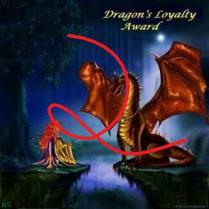




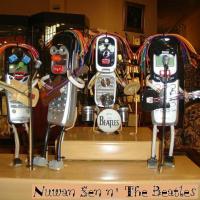

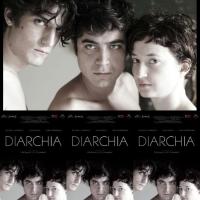
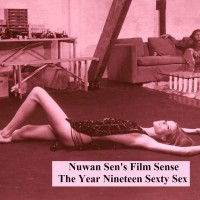
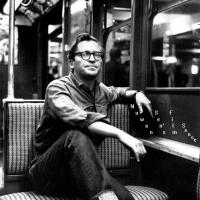
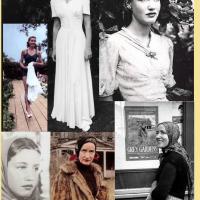
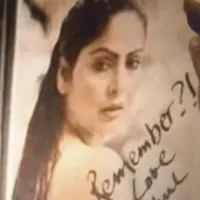
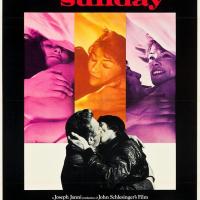
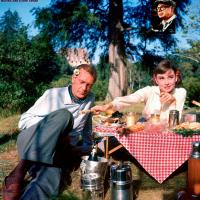
Lovely tribute. I’m not familiar with Asha, but it sounds like she’s lived a long and legendary life, bringing joy to millions along the way.
Yes, Thanks Paul!
She suffered a lot, but she was a fighter and a survivor, in her own way. She in one of the most influential people in the world of music. As is her sister(who’ll turn 89, later this month).
Cool post and nice collection of Asha tai’s songs. Her voice reminds me of Sandy Cheeks and baby chipmunks.
Ha!! Ha!! I had no idea who Sandy Cheeks was, so I googled her out.
As for baby chipmunks, am not sure whether you mean actual chipmunks, or the Disney characters?? o.O
or Alvin and the Chipmunks??
Come to think of it, Alvin and the Chipmunks, do sound a bit like a Brimful of Asha!! 😀
Sandy Cheeks is that squirrel from Spongebob, and those baby chipmunks can mean any type of chipmunk, be it real, Disney, or Alvin and the Chipmunks.
Thanks, yes I googled Sandy Cheeks out.
BTW, as you might know am hosting this Blogathon, for this month, it would be lovely if you could join.
LINK:- https://nononsensewithnuwansen.wordpress.com/2018/10/01/the-%e2%9d%9doctober-birthdayz%e2%9d%9e-blogathon/
Cheers
Nuwan Sen